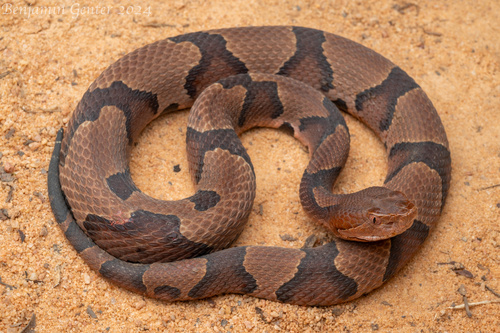
Copperhead
With striking copper-red bands and a cryptic demeanor, the copperhead stealthily inhabits North America's woodlands. Its venomous bite is seldom fatal but demands respect. An adept ambush hunter, it plays a crucial role in controlling small mammal populations, maintaining ecological balance.
12-15 years
Lifespan
Length: 61 - 122 cm
Size
3.5 years
Age of Sexual Maturity
Low
Aggression
Least Concern
Conservation Status
Stable
Population Trend
Distribution Range of the Copperhead
Agkistrodon contortrix, commonly known as the Copperhead, is native to the United States. It is predominantly found in the eastern and central regions, including parts of the Midwest and the South. Specific states where Copperheads are commonly found include Texas, Oklahoma, Kansas, Illinois, and as far east as New York and Massachusetts.
Copperhead's Habitat
Environmental Conditions
The typical habitat for the Copperhead includes deciduous forests, mixed woodlands, rocky outcrops, and near water sources such as rivers or streams. They are commonly found in areas that provide adequate cover such as fallen leaves or logs.
Ecological Niche
Copperheads are ambush predators and rely on their camouflage to blend into their surroundings. They primarily feed on small mammals, birds, and occasionally amphibians and insects. They play a significant role in controlling the populations of their prey species and are an integral part of their ecosystem's food chain.
Copyright @ Nature Style Limited. All Rights Reserved.
 English
English